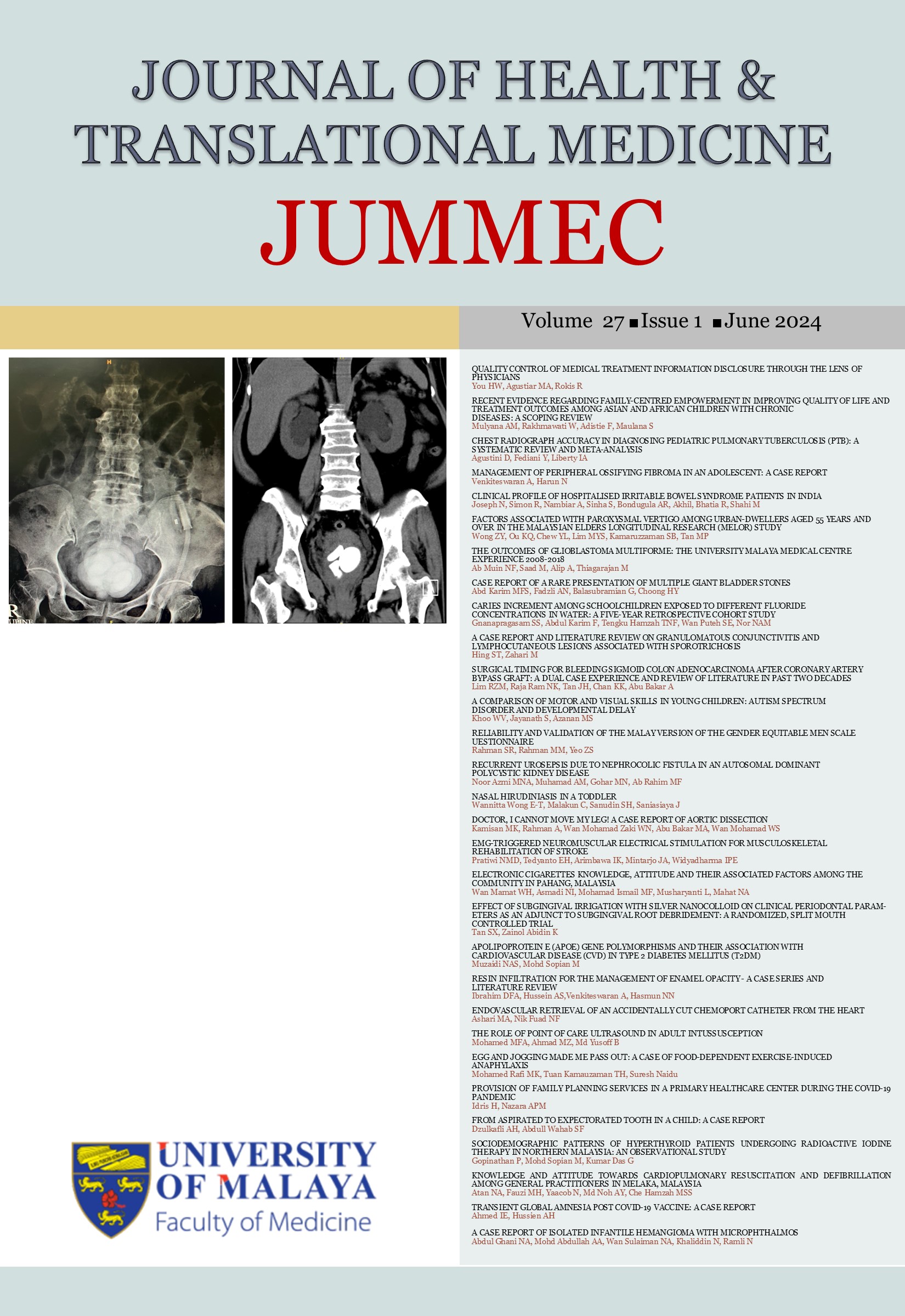THE OUTCOMES OF GLIOBLASTOMA MULTIFORME: THE UNIVERSITY MALAYA MEDICAL CENTRE EXPERIENCE 2008-2018
Received 2023-04-14; Accepted 2023-06-26; Published 2024-01-02
DOI:
https://doi.org/10.22452/jummec.vol27no1.7Abstract
Glioblastoma multiforme (GBM) is the most common and biologically aggressive adult primary brain tumour. The standard of care treatment is maximal safe resection (MSR) followed by post-operative concurrent chemoradiotherapy (CCRT) and adjuvant temozolomide (TMZ). This retrospective single-centre study was carried out at a tertiary academic hospital, University Malaya Medical Centre, between 2008–2018. This study aims to analyse the overall survival (OS) and progression free survival (PFS) and identify the prognostic factors affecting survival in our cohort of patients. Data including patient demographics, clinicopathologic characteristics and treatment characteristics were collected and correlated with survival. Survival analysis was performed with the Kaplan–Meier method.
The multivariate analysis using Cox proportional hazard regression was performed to evaluate the prognostic clinicopathological for survival. A total of 100 patients were analysed. The median OS and PFS for the whole sample population was seven months (95% CI = 4-10 months) and four months (95% CI = 3.2-4.8 months) respectively. The factors associated with worse median OS were no adjuvant treatment (HR = 6.03; 95% CI = 2.40-15.16; p = 0.00), age older than 65 years old (HR = 2.22; 95% CI = 0.10-4.96; p = 0.05), post-operative ECOG PS >2 (HR = 6.13; 95% CI = 1.70-22.11; p = 0.01), and the temporal-lobe-located tumour (HR = 3.89; 95% CI = 1.51-10.01; p = 0.01). The fundamental points that could be deduced from the observed difference in survival outcome from our study to the literature are (1) age and PS were the two crucial pre-treatment factors that influenced the outcome, and (2)
radiotherapy (RT) was demonstrated as the essential treatment in GBM and that the dose fractionation played an essential role on the outcome.
Downloads
Downloads
Published
Issue
Section
License
All authors agree that the article, if editorially accepted for publication, shall be licensed under the Creative Commons Attribution License 4.0 to allow others to freely access, copy and use research provided the author is correctly attributed, unless otherwise stated. All articles are available online without charge or other barriers to access. However, anyone wishing to reproduce large quantities of an article (250+) should inform the publisher. Any opinion expressed in the articles are those of the authors and do not reflect that of the University of Malaya, 50603 Kuala Lumpur, Malaysia.


